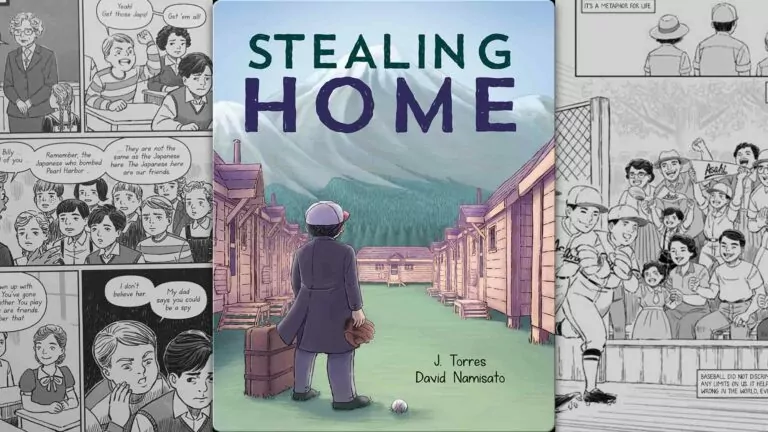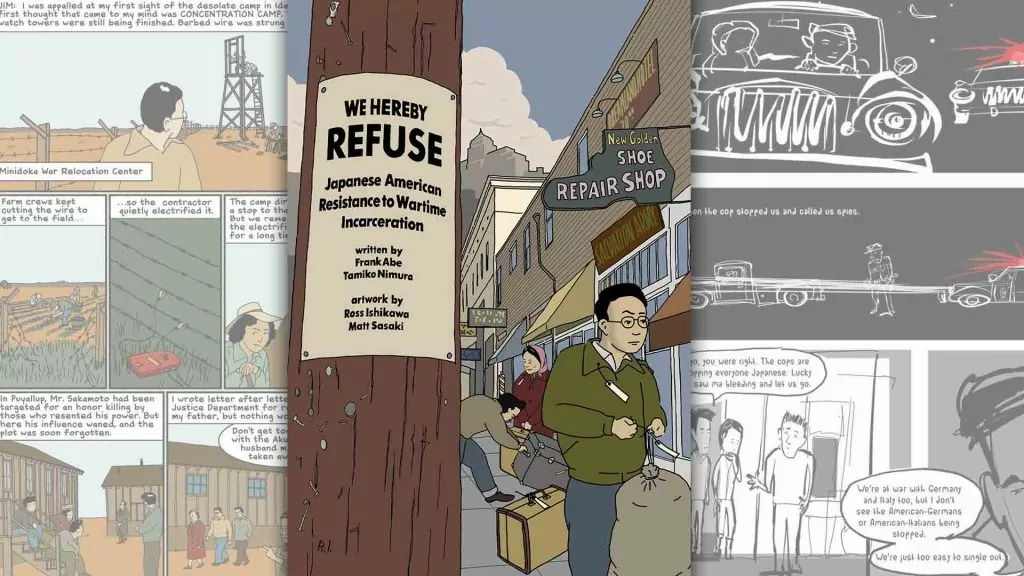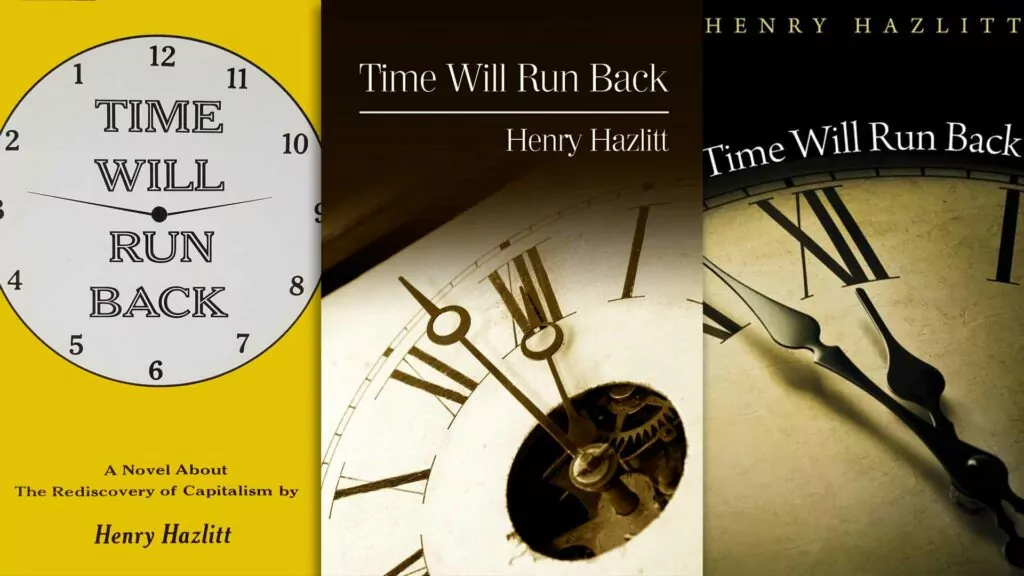by J. Torres and David Namisato
2021 / 112 pages
During World War II, after Japan attacked Pearl Harbor, Canada rounded up Japanese Canadians living on the coast and shipped them away to abandoned mining towns further in the interior. To add to the horror, this “temporary measure” came with devastating permanent consequences: their homes and most of their goods were sold, and the money was used to build and maintain their internment camps. So when the war ended and they were released, these families couldn’t go home. They had to start from nothing.
So how could such a sad chapter of Canadian history get a gentle enough treatment to be suitable for this Grade-4-and-up graphic novel? By focusing on how at least some of these Japanese Canadians managed to overcome their mistreatment.
For Sandy Saito, baseball was a big help. Even before the war, anyone of Asian descent didn’t exactly fit in with the predominantly white population of Canada. But on the baseball diamond, it didn’t matter what others thought; all that mattered was how you played. As we’re introduced to Sandy we find out this young boy is a huge fan of the Vancouver Asahi, a local baseball team made up of Japanese Canadians. Because Asahi players were smaller than their opponents, they couldn’t play bash ball; their game wasn’t about hitting more home runs than the opposition. They, instead, played “brain ball” with steals and bunts. And it worked so well they won the league championship 11 of the previous 24 years.
When Sandy and his family were sent away, he took his baseball glove, as did others. They had no insulation in their cabins, and families had to share space. There were outhouses instead of bathrooms. And they couldn’t leave. But they could play baseball.
I don’t have any cautions to offer. The only critique I can think of is that in making this gentle enough for elementary students, the authors might have made a little too little of the horrible abuse that happened. My own fourth grader read this, and thought it was quite good, but it didn’t disturb her like it did me. That’s probably because I was reading between the lines, and she was just taking it as it was told on the page.
As to audience, she didn’t know if it would grab a fourth-grade boy’s attention. I think she might be on to something. Even though baseball is central to the story, this isn’t a sports book. We don’t see any great plays, or tight games, so it doesn’t have that sort of boyish pull.
But for elementary-and-up kids with any interest in history, this will be a very intriguing read.
And for adults like me, who never knew about these events, this is a must-read. If we want our government to act with restraint in the future, we need to remember the times when it didn’t do so in the past. We need to know, and we need to share that history, lest in forgetting it, we have to live through it again.
For a more brutal account of how the US treated Japanese Americans during the war, you’ll want to read We Hereby Refuse: Japanese American Resistance to Wartime Incarceration.












